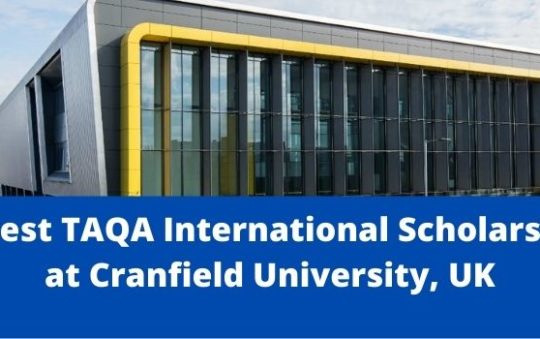Birmingham Undergraduate Scholarship opportunities in the UK is open, you are at the right place. Keep reading!
Studying in the UK is the dream of many students as it is a top choice of many students. The country is reopening with one of the fastest vaccination rates in the world.
The University of Birmingham has announced an undergraduate scholarship for those who have a keen interest in Computer Science. Here are all the details about the scholarship!
✅ Interesting Facts About University of Birmingham
The University of Birmingham is a public research university in Edgbaston, Birmingham, England. It received its royal charter in 1900 as the successor to Queen’s College, Birmingham, and Mason Science College (founded in 1875 by Sir Josiah Mason), making it the first English civic or’red brick’ university to do so. It is a founding member of both the Russell Group of British research universities and the Universitas 21 international network of research universities.

The student population, which is the seventh largest in the UK, consists of 23,155 undergraduate and 12,605 postgraduate students (out of 169). The university’s annual income for 2020–21 was £774.1 million, with £168.3 million coming from research grants and contracts, and an expenditure of £738.5 million.
The university is home to the Barber Institute of Fine Arts, which houses works by Van Gogh, Picasso, and Monet, as well as the Shakespeare Institute, the Cadbury Research Library, which houses the Mingana Collection of Middle Eastern manuscripts, the Lapworth Museum of Geology, and the 100-metre Joseph Chamberlain Memorial Clock Tower, which is visible from many parts of the city. Former British Prime Ministers Neville Chamberlain and Stanley Baldwin, British composer Sir Edward Elgar, and eleven Nobel laureates are among the university’s academics and alumni.
Many scientific breakthroughs and inventions have been made possible by the university. Sir Norman Haworth was Professor and Director of the Department of Chemistry from 1925 to 1948. From 1947 to 1948, he served as Dean of the Faculty of Science and as Vice-Principal. His research was primarily focused on carbohydrate chemistry, and he confirmed a number of structures of optically active sugars.
By 1928, he had deduced and confirmed the structures of maltose, cellobiose, lactose, gentiobiose, melibiose, gentianose, raffinose, and aldose sugars’ glucoside ring tautomeric structure. His research contributed to the understanding of the fundamental properties of starch, cellulose, glycogen, inulin, and xylan molecules. He also helped to solve the problems with bacterial polysaccharides. In 1937, he was awarded the Nobel Prize in Chemistry.

Sir John Randall, Harry Boot, and James Sayers invented the cavity magnetron at the Department of Physics. This was critical to the Allies’ victory in WWII. Sir Rudolf Peierls and Otto Frisch wrote the Frisch–Peierls memorandum in the Physics Department in 1940, demonstrating that the atomic bomb was more than just theoretically possible. When the Chemistry department was housed in the Hills building, the university also hosted early work on gaseous diffusion.
Building of Poynting Physics
In 1943, physicist Sir Mark Oliphant proposed building a proton-synchrotron, but he made no guarantee that the machine would work. When phase stability was discovered in 1945, the proposal was revived, and construction of a machine capable of exceeding proton energies of 1 GeV began at the university. However, due to a lack of funds, the machine did not begin operating until 1953. Brookhaven National Laboratory managed to outperform them; they began construction on their Cosmotron in 1952 and completed it in 1953, before the University of Birmingham.
Sir Peter Medawar was named Mason Professor of Zoology at the university in 1947. His research focused on the phenomenon of tolerance and transplantation immunity. He collaborated with Rupert E. Billingham on research on pigmentation and skin grafting problems in cattle. Skin grafting was used to distinguish between monozygotic and dizygotic twins in cattle.
Taking R. D. Owen’s earlier research into account, they concluded that actively acquired tolerance of homografts could be artificially reproduced. Medawar was elected a Fellow of the Royal Society for this work. In 1951, he left Birmingham to join the faculty at University College London, where he continued his transplantation immunity research. In 1960, he was awarded the Nobel Prize in Physiology or Medicine.
✅ Details about Undergraduate International Scholarship:
The Undergraduate International Scholarships in Computer Science are awarded to overseas undergraduate students who apply to study Computer Science to recognize academic excellence.
- Level of study: Any Undergraduate
- Subject area: Computer Science
- Nationality: EU, Overseas (Non-EU)
- Type of Award: University
- Deadline for applying: None. Open all year.
✅ Eligibility Criteria
To qualify for International Student Scholarship, the applicant must be:
- The applicant must be classed as Overseas for fee purposes.
- The applicant has made a program in Computer Science their firm choice.
- The applicant must meet the grades as stated in the above table.
✅ How to Apply
There is no separate application process for the scholarship – the scholarship will be rewarded automatically to all eligible students admitted to the School of Computer Science at the University of Birmingham who apply to and select one of the School’s courses as their firm choice.
✅ Value of Award:

For further information about Undergraduate International Scholarship, visit official website of the University of Birmingham.
✅ Get help for this Amazon Internship
Join our Facebook group to connect with international students and discuss your study abroad opportunities such as scholarships, admission, uni selection, free education, college fee, flights, accommodation, transport, etc.



